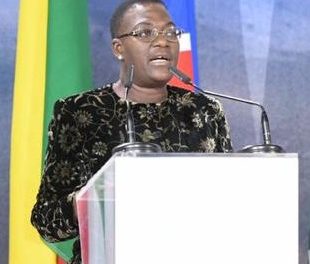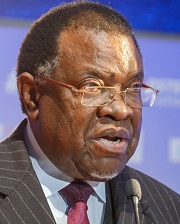
Socially Fit for Purpose – Marketing and Social Media Platforms. Where does the ad spend work?

By Natasja Beyleveld, Managing Director of NaMedia.
Southern Africa boasts the highest comparative number of mobile subscriptions across the world, but for ‘old school communications’; not as much internet or social media usage. With a population size of 2,61 million, Namibia has 2,75 million mobile subscriptions of which only a third of these subscribers use the internet (31% penetration versus Southern Africa’s 51%), and of which 92% are prepaid connections.
In context, Namibia still ranks low in the number of internet users (31% versus a 57% global average), and mobile social media users (26% versus 42%) – although Namibia’s annual digital growth is most visible in the number of mobile social media users (8,8% per annum growth), just 1,2% behind the global average. The trajectory seems on par with a wishful state of digital growth, but we are definitely seeing ‘the unreached’ in the background.
In terms of your marketing audience; only a quarter (26%) of Namibians actively use their social media profiles (versus 38% social media penetration in Southern Africa).
Consider that Namibia’s ‘digital audience’ is 88% literate, and resembles a 72% ‘readiness’ on the global mobile connectivity index and that 81% of this audience has an account with a financial institution. Also, 15% has a credit card, 43% has a mobile money account, and a humble 18% embraces online shopping.
Also in agreement with global statistics, Namibians love Facebook – but how effective is this platform as a marketing tool? With a total advertising audience of 630k on Facebook (monthly active users), 230k on Instagram, 46k on Twitter, and 200k on LinkedIn – how does corporate ad-spend influence consumer behaviour?
On a quarterly basis, Namibian statistics show that the total growth in advertising audience is most prevalent on platforms such as Instagram (+4,5%), and twitter (+9,5%). Facebook on the other hand, indicates that only about 35% of the users are adults above 13 years that can be reached with adverts. There is no significant growth in quarter on quarter advertising reach on Facebook for Namibia.
Of the 35% targeted audience on Facebook, it is significant to know that these individuals only like on average one Facebook page in their lifetime (so I guess a very small percentage of us like a lot, and many only like themselves, lol) – a case of accidental narcissism but that’s OK. This audience also on average only likes about 9 posts a month, makes about 4 comments, and shares one post.
You’re lucky if these 220k individuals click on 6 adverts each per month. How many adverts do corporates run on average? The answer is a lot. Is it reasonable to deduce that the engagement scores are frequently below target, although trending posts compete for ‘top attention’ (mostly short videos, or images)?
Further perspective: Instagram has a marketing platform of about 30k users (13% of 230k users), while Twitter would provide you with a target audience of about 12k users (2,6% of 46k users) which is less than LinkedIn’s 26k (13% of 200k users). Your ad-audience on Twitter and LinkedIn is mostly male (71% and 58% respectively), whereas on Instagram and Facebook mostly female (52% and 51% respectively).
I believe that traditional (echoed in their tradigital footprints) media still plays a tremendous role in influencing public perception, and consumer attitude. There is a range of information sources in Namibia including five daily newspapers, at least seven weeklies, about 30 radio stations, a state television broadcaster and several private stations. A single media platform provides context (relevance) to stories, and the advertising market. Various media platforms echo similarity (in stories) or disconnect (agenda-setting). Sure, most coverage relates to politics and economics – but your target audience still shares their copy or becomes an influencer via word of mouth (readership and circulation still estimated at 70%+ reach on average for traditional media outlets in Namibia).
What the digital statistics have shown us, is that accessing information is still difficult for citizens based in rural areas, unless this information is made available on the radio (hence the importance of tracking news stories across all stations towards best monitoring perceived and dominant public perceptions towards all communicating protagonists). Radio provides approximately 97.5% coverage across Namibia, however NBC notes that their radio stations reach 78% of the country. ‘At Independence in 1990, Namibia had only one TV station and one radio station. The airwaves have definitely opened up since then and there is much diversity amongst the commercial and community radio stations’.
To a large extent, print media ‘still writes the story’ across various platforms (radio, tv, digital). It provides the platform for personalised approach to engagement; your voice / your face / both. It’s the necessary repetition (and evolution) of institutional (economic, political, social) messages that shape the agenda. The volumes of these messages determine what is above the awareness threshold, and what is deemed most relevant in context of the democracy, and national developmental goals.
Recorded for traditional media outlets (as captured in the Afrobarometer 2018 report); “across all media, and in the fiscal year 2017/2018, the Namibian advertising market amounted to 7.1 million USD (104 million NAD). That’s dollar spent on ad-space, not public relations campaigns. Public communications (free of charge) provide smaller brands with an authentic opportunity to compete with the best. Your sponsorship-bill will be less (roughly 1% or 2% of profits if you’re modest), but your voice could be loud.
Still lingering on ad-spend, the report also notes that “government is still the biggest advertiser in the country and has used this power to punish the media that are too negative to
its policies”. Regardless; during recession – media felt it and dealt it by printing less, and diversifying content and platform. Corporates felt the pressure more than ever; to monitor, benchmark, communicate transparently, and report to the executives and board.
In agreement with the digital statistics we’ve reviewed, the Afrobarometer report also mentions that both citizens and journalists are increasingly making use of new media – including platforms such as WhatsApp and other social media – to openly express their views. These citizens/journalists make up a significant part of Namibia’s active internet and social media users, again the story-drivers or engagers.
How do we bake this cake then? Our ingredients will not all be in one basket. The age old ROI-challenge (returns on investment) remains a unique puzzle – and arguments rest on quality more than on quantity (identifying and complying with various key performance indicators, and not just calculated monetary ‘returns’). We are pushed towards engagement scores, more than to ‘likes’ and ‘views’. And as always, there is a big difference between paid and non-paid for messages – and their unique influence on any entity’s public reputation. We cannot measure non-paid for messages (public relations) as if paid for (advertising space). In measuring impact; it’s never an either-or-game, but rather a question of congruence and consistency. The icing on this cake would be diversity; not in just ad-spend (target markets) but also on reputation drivers that shape the voices and perceptions towards brand. Big data and good statistics guide us on a very clear path – but remember that the figures still only point you to people, and you have to talk and walk with people in order to turn heads (and overheads).
At the end, take into consideration that some messages are meant exactly for the male executives on LinkedIn, and that some of those messages must be part of educational mainstream media campaigns to engage effectively your stakeholder with your vision. You may be spending less money on social media campaigns (attractive resolution to budgets), but see it as a ‘10% addendum’ to your total advertising basket only. Still plan for marketing communications across traditional and tradigital media outlets.
There are various facets of a brand that must become a part of all communications – balanced across paid and non-paid media platforms. We’re not always in control of the share of voice, but if you have clear targets and campaigns born from ongoing market research, your data and statistics will clearly answer your questions and continue to guide your path ahead.












































